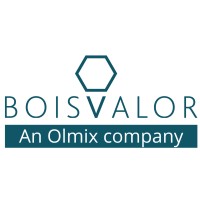One of the most important steps in mycotoxin management is the evaluation of mycotoxins in the raw materials and finished feeds. Therefore, Olmix created the Myco’Screen program that aims to collaborate with independent labs worldwide. As such, Olmix has established a long-term partnership with Labocea, a French independent laboratory.
Laboeca performs mycotoxin analyses with specific expertise on liquid chromatography coupled with tandem mass spectrometry, allowing the detection of more than 45 mycotoxins per tested sample. All analyses are collected in a database comprised of about 15,000 samples to date, collected worldwide between 2013 and 2021.
This database shows that the major mycotoxins worldwide remain deoxynivalenol (DON), zearalenone (ZEA), fumonisins (FUM), and depending on the region, aflatoxins (AFLA). Additionally, 94% of the samples from the database show the presence of 2 or more mycotoxins simultaneously and 75% of the samples contain more than 6 mycotoxins, indicating that polycontamination is common.

Corn
Corn is the most frequent contaminated material with 99% of the samples being polycontaminated (n=3,200). The most occurring mycotoxin in corn materials is DON: 92% of the samples were contaminated at a significant median level of 755 ppb. Labocea analyzes a complete mycotoxin profile, and quantifies besides DON its acetylated forms, like 15-O-AcetylDON, and other trichothecenes like nivalenol.
Those mycotoxins are less known, but frequently found and are considered even more toxic than DON. 82% of corn material samples are positive for 15-O-AcetylDON and 60% for nivalenol, both molecules being twice as toxic as DON. The sum of trichothecenes is expressed as DON equivalent (DONeq) and provides a global risk level for DON and its related forms in a single value. 94% of corn and corn derived feedstuffs are positive for DONeq with a median value of 1,405 ppb, considered a high risk for the animals.
Corn material samples also tested above the limit of quantification (LOQ) for ZEA and FUM in 79% and 78% of the samples, respectively. Globally speaking, the median levels of those mycotoxins fall within safe levels. However, samples originating from regions with warm climates show a higher occurrence of FUM (96%) with a significant median contamination of 1,100 ppb. Similarly, the occurrence of AFB1 in samples from those regions increased from 6% to 31% positive samples, with median contamination increasing to a significant level of 11 ppb.
Small cereals
Small cereals like wheat and barley, are a major source of DON and its derivates. As the crops are grown in more temperate climates, less FUM and AFLA are found. Among nearly 2,000 cereal samples tested, 85% contain DON and 93% DONeq. However, only 1% and 13% of samples contain AFLA and FUM respectively. Other mycotoxins frequently found in cereals are ergot alkaloids, present in 29% of the samples (105 ppb).
Oilseeds
Oilseeds, like soybean or rapeseed, show a lower mycotoxin occurrence. In soybean and soybean derived materials, DON, ZEA and FUM are detected in 40%, 29%, and 59% of the samples (n=173), respectively.
In 99% of these samples, mycotoxin levels are considered safe, hence the risk from soybean is rather low. Similarly, rapeseed and rapeseed derived materials also carry relatively low mycotoxin risk. The rapeseed samples from the Olmix database are positive for DON in only 9% of the cases, 21% for FUM and 3% for ZEA. All samples fall within safe levels. Thus, the risk for oilseeds is of much lower importance than for corn materials or small cereals.




